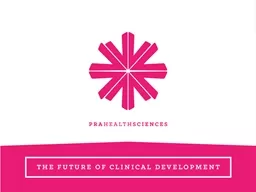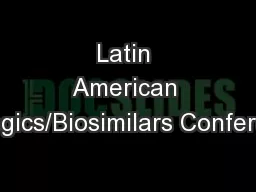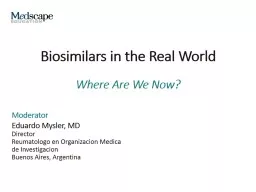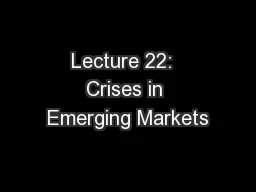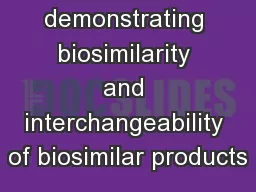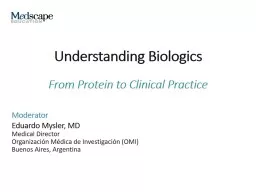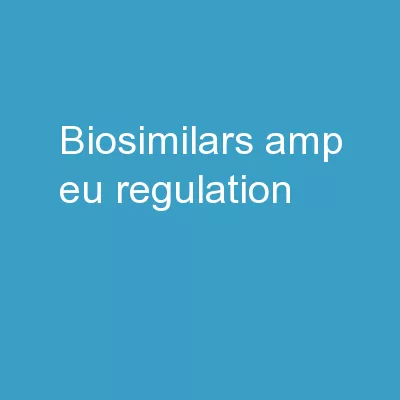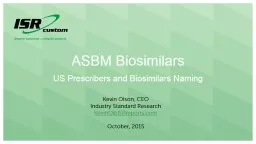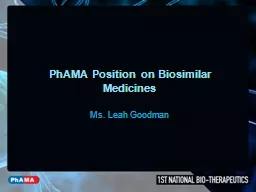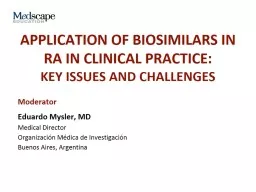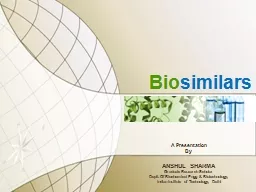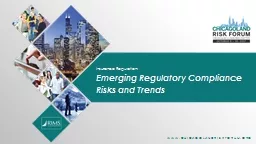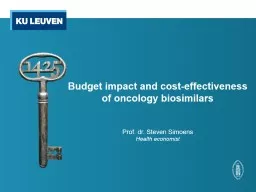PPT-Biosimilars in emerging markets- regulatory and Commercial considerations
Author : jane-oiler | Published Date : 2019-02-02
OMIC Group Biosimilars 2104 Hyderabad India 2729 October 2014 Rodeina Challand ChallandRodeinaprahscom Biologic Molecules Biologic molecules are complex macromolecules
Presentation Embed Code
Download Presentation
Download Presentation The PPT/PDF document "Biosimilars in emerging markets- regulat..." is the property of its rightful owner. Permission is granted to download and print the materials on this website for personal, non-commercial use only, and to display it on your personal computer provided you do not modify the materials and that you retain all copyright notices contained in the materials. By downloading content from our website, you accept the terms of this agreement.
Biosimilars in emerging markets- regulatory and Commercial considerations: Transcript
Download Rules Of Document
"Biosimilars in emerging markets- regulatory and Commercial considerations"The content belongs to its owner. You may download and print it for personal use, without modification, and keep all copyright notices. By downloading, you agree to these terms.
Related Documents

